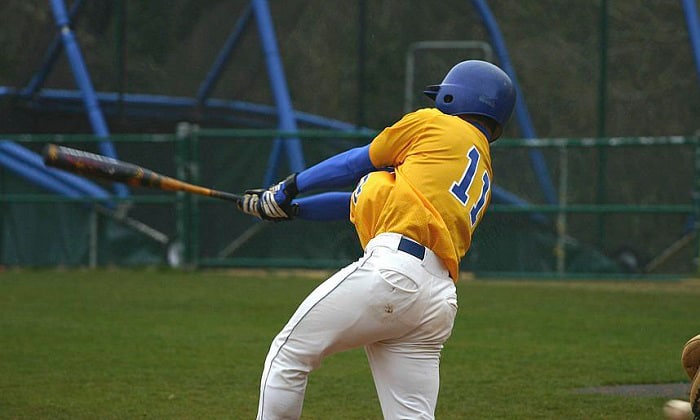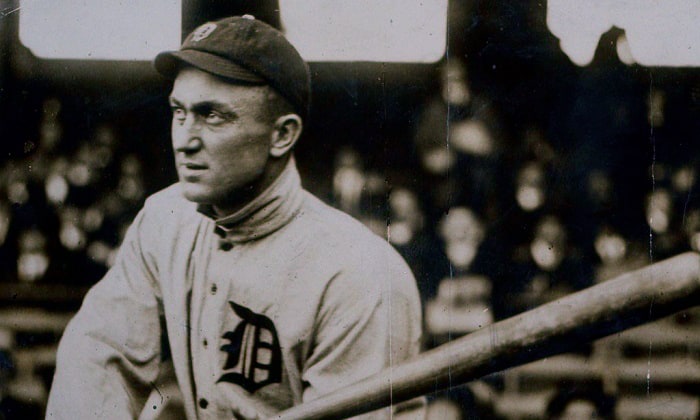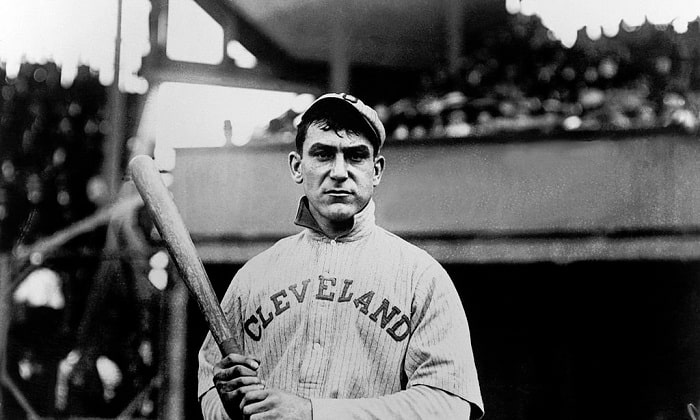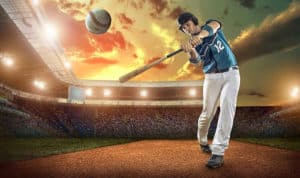Player performance in baseball is measured by various statistics. Among the most popular stats analyzed by baseball scouts and coaches is batting average (BA), which is the best indicator of a player’s hitting proficiency.
What is a good batting average in baseball? A batting average of .300 and higher is considered good in professional baseball. MLB batting averages of .400 were said to be unattainable in modern baseball, but single-season BA figures indicate they have been achieved on several occasions.
Contents
What is Batting Average in Baseball?
Batting average is the most common tool used to express a player’s hitting efficiency. It is determined by dividing the total number of hits by at-bats and indicated in decimals between 0 and 1. The higher the number, the better a particular hitter performs at the plate.
While it is the oldest and most popular hitting stat, it is important to remember that this metric is not all-inclusive. For instance, it does not consider whether the hit is a single, double or triple, which can tell an average hitter from a power hitter.
Batting average only measures a hitter’s ability to advance to base successfully with a swing. It also disregards the number of walks or hit-by-pitches earned by the batter, which is measured by another stat known as the on-base percentage (OBP).
How Do You Calculate the Batting Average in Baseball?
The batting average in baseball is calculated by dividing the total number of hits a player makes by the number of times they reach base through a hit, error, or fielder’s choice (at-bats).
While the formula seems self-explanatory, it can often confuse the newbie baseball fan as both hits and at-bats involve a player needing to reach base. To understand the batting average fully, let’s review the definition of a hit and an at-bat.
- Players are credited with a hit whenever they strike the ball into fair territory and reach base solely on their own effort and not arising from an error or fielder’s choice.
- On the other hand, an at-bat represents the number of times the hitter puts the ball into play and reaches base, whether through a hit, error, or fielder’s choice. An at-bat can also be credited even when a player is put out on a non-sacrifice play.
- Bases-on-balls or walks, as well as hits-by-pitches and sacrifices, do not count as at-bats. Do not confuse at-bats with plate appearances, the latter of which simply describes a player’s turn at batting regardless of the outcome.
The Importance of Batting Average in Baseball
For the longest time, batting average was the most important statistic demonstrating a player’s batting prowess. Consequently, it also reflected their overall contribution to the team.
- The perfect batting average (.300 – .400) has advantages, as a higher number will mean a player is an above-average hitter.
- In contrast, a bad batting average of .200 or lower indicates abysmal hitting skills, whether you’re playing in college baseball or a professional league.
Having the best batting average in a season was a highly-coveted statistic in MLB. However, with the advent of more advanced stats such as on-base percentage (OBP), on-base plus slugging (OPS), and weighted on-base average (wOBA), batting average has taken the backseat in recent years.
After all, baseball is not just about making hits; more importantly, it is about reaching base and scoring runs. Scoring runs is every hitter’s most valuable contribution to the team, and batting average is not the all-encompassing statistic that determines the overall offensive value of a player.
That brings us to the major flaws of the BA stat. Besides disregarding walks which can make a major contribution to run scoring, the batting average only considers the number and not the quality of hits.
As a result, it treats singles, doubles, triples, and even homeruns as the same thing. Clearly, a double, triple, or homer carries more weight than a single when it comes to scoring runs in baseball.
Batting Average Records in MLB
Below is a table indicating MLB players with the highest batting average of all time.
| Player | Ranking | Batting Average | On-base Percentage | Career Hits | Seasons Played |
| Ty Cobb | 1 | 0.366 | .433 | 4189 | 24 |
| Rogers Hornsby | 2 | 0.358 | .434 | 2930 | 23 |
| Joe Jackson | 3 | 0.356 | .423 | 1772 | 13 |
| Ed Delahanty | 4 | 0.346 | .411 | 2596 | 16 |
| Tris Speaker | 5 | 0.345 | .428 | 3514 | 22 |
| Billy Hamilton | 6 | 0.344 | .455 | 2158 | 14 |
| Ted Williams | 0.344 | .482 | 2654 | 19 | |
| Dan Brouthers | 7 | 0.342 | .423 | 2296 | 19 |
| Harry Heilmann | 0.342 | .410 | 2660 | 17 | |
| Babe Ruth | 0.342 | .474 | 2873 | 22 | |
| Bill Terry | 8 | 0.341 | .393 | 2193 | 14 |
| Pete Browning | 0.341 | .403 | 1646 | 13 | |
| Willie Keeler | 0.341 | .388 | 2932 | 19 | |
| Lou Gehrig | 9 | 0.340 | .447 | 2721 | 17 |
| George Sisler | 0.340 | .379 | 2812 | 15 | |
| Tony Gwynn | 10 | 0.338 | .388 | 3141 | 20 |
| Jesse Burkett | 0.338 | .415 | 2850 | 16 | |
| Nap Lajoie | 0.338 | .380 | 3242 | 21 |
Batting averages in Major League Baseball are also recorded by year to determine the player with the highest batting average in a season. Hugh Duffy of the Boston Beaneaters holds the highest all-time single-season record of 0.440.
There are conflicting reports on who holds the highest single season batting average in modern-era baseball (post-1900s). Some sources say it’s Nap Lajoie of the Philadelphia Athletics with 0.426. However, MLB lists his BA at only 0.421, next to Rogers Hornsby’s record of 0.424.
Below is a table indicating MLB players with the highest single season batting average of all time.
| Rank | Player | Season | Team | At-bats | Batting Average |
| 1 | Hugh Duffy | 1894 | Boston Beaneaters | 539 | 0.440 |
| 2 | Tip O’Neill | 1887 | St. Louie Cardinals | 517 | 0.435 |
| 3 | Ross Barnes | 1876 | Chicago White Stockings | 322 | 0.429 |
| 4 | Willie Keeler | 1897 | Baltimore Orioles | 564 | 0.424 |
| 5 | Rogers Hornsby | 1924 | St. Louie Cardinals | 536 | 0.424 |
| 6 | Nap Lajoie | 1901 | Cleveland Indians | 544 | 0.421 |
| 7 | George Sisler | 1922 | St. Louis Browns | 586 | 0.420 |
| 8 | Ty Cobb | 1911 | Detroit Tigers | 591 | 0.420 |
| 9 | Fred Dunlap | 1884 | St. Louie Cardinals | 449 | 0.412 |
| 10 | Ty Cobb | 1912 | Detroit Tigers | 553 | 0.410 |
Frequently Asked Questions
Is a .250 batting average good?
A .250 BA is average in Major League Baseball, while .300 is outstanding. Anything above that is already exceptional.
A .300 batting average is an excellent benchmark to strive for across most levels of modern baseball. However, it is essential to note that figures can go higher in high school or for 13u baseball since fewer games can lead to higher averages.
Who developed the batting average statistic?
An English-American sportswriter and statistician, Henry Chadwick first developed the batting average for cricket. Then, during the late nineteenth century, he modified the cricket batting average computation and used at-bats instead of outs to arrive at a figure.
What is the lowest batting average in MLB history?
Touted as one of the worst hitters in Major League Baseball, Bill Bergen of the Cincinnati Reds and Brooklyn Dodgers holds the record for the lowest all-time batting average of 0.170. Out of 3,028 career at-bats, he only succeeded with 518 hits.
Conclusion
One of the first questions baseball fans usually ask is, “What is a good batting average in baseball?” Since the sport’s inception, this popular statistic has been the easiest and quickest way to assess a hitter’s performance at the plate.
In this modern age of baseball sabermetrics, however, a hitter’s expertise is now measured in more sophisticated formulas that consider other factors. So be sure to learn other hitting statistics that best predict a batter’s overall significance in offensive play.

A powerful swing and the ball is flying across the field, just one hit, and we might never forget the thrill it brings. I do not know about you, but I never do. Every baseball game is the chance to compete with others and cooperate with your teammate. It is among my biggest passions.

















